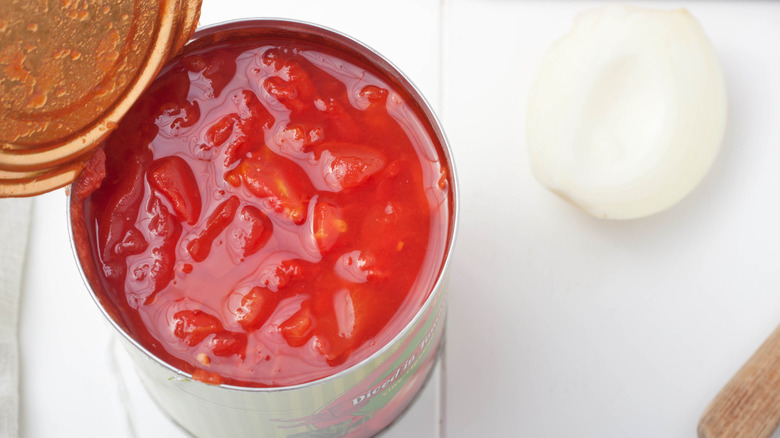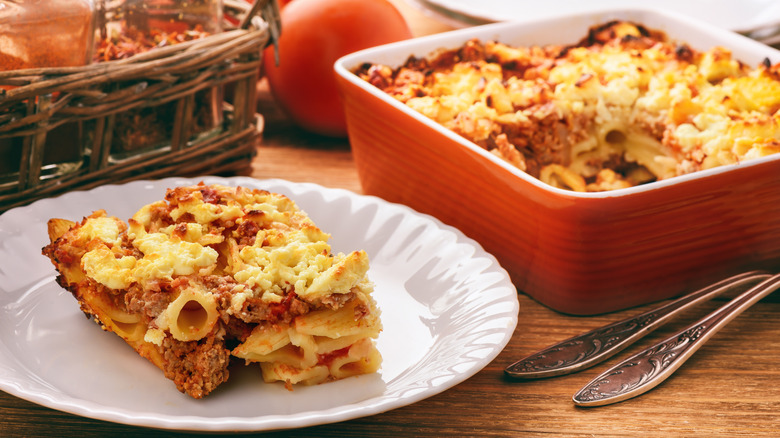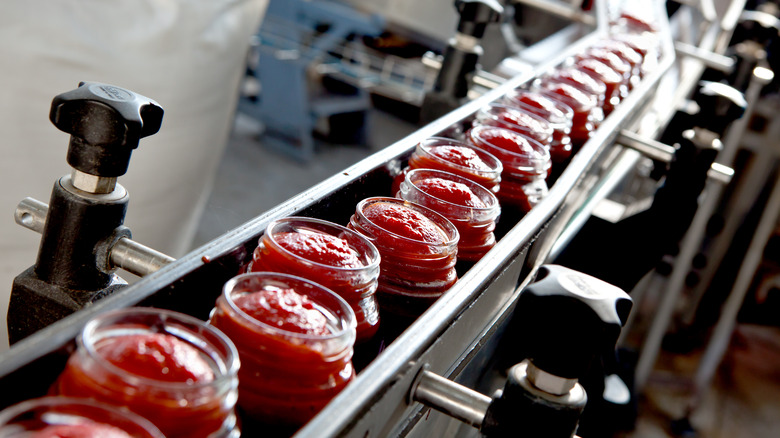Which Variety Of Canned Tomatoes Are Ideal For Simmering Sauces?
Many Italian, Greek, and American recipes start with rich, flavorful tomato sauce. There's nothing like the aroma of tomatoes, onions, and garlic drifting through your house. But unless you're a prolific gardener, you'll most likely use canned tomato products to make the red sauce to pour over spaghetti or use in lasagna. And there's no shame in this; canned and jarred tomato products are nutritious, delicious, and ready-to-use, per Food Network.
When you're making a sauce, canned tomatoes are usually a better choice than fresh ones. Their flavor is more concentrated, and they're picked when they're luscious and ripe, unlike the mealy fresh tomatoes that squat on the shelves in the grocery store in January. While a few of the nutrients are lost in the canning process, canned tomatoes are still a healthy food.
But there are so many varieties to choose from; there's tomato paste, whole tomatoes, tomato purée, diced tomatoes, stewed tomatoes, crushed tomatoes, or plain old tomato sauce, per Simply Recipes. What you choose depends on what you are making and what you want the finished recipe to taste like.
Choosing the right variety
Which variety of canned tomatoes you buy depends on what you're going to do with your tomato sauce. Are you just going to pour it over some pasta? Are you using it to make a classic Italian lasagna or a Greek lasagna recipe, aka pastitsio? Or are you making a chunky soup, stew, or chili?
If you want your tomato sauce to have some texture and are cooking it for a short time, use diced tomatoes. Diced tomatoes are also the better choice for soups and stews and in spicy chili. If you want a nice, smooth sauce that simmers for a long time, use whole tomatoes. They will break down in a few hours, or you can cut them right in the sauce with scissors or break them up with a potato masher.
One cup of homemade sauce is equivalent to an 8-ounce can of tomato sauce. And to substitute for a 24-ounce jar of commercial pasta sauce, logically enough, use 3 cups. Then, use your beautiful tomato sauce to make skillet lasagna, slow cooker fresh veggie lasagna, smoked mozzarella chicken, and spinach lasagna, or slow cooker chili beef 'n pasta.
A bit of food science
The canned tomato variety you choose for your sauce matters more than you think for one specific reason. Commercially canned tomatoes are made with a chemical called calcium chloride. This compound is perfectly safe, but it affects the texture of the tomato.
Calcium chloride is used at several points in a tomato's life. When the plant is growing, it's sprayed on the tiny tomatoes to prevent blossom end rot, according to the University of Tennessee Extension Service, which is just as icky as it sounds. That condition is caused by a calcium deficiency, so it's only logical that calcium chloride would fix it.
And calcium chloride is used when processing tomatoes, to help keep them firm so they don't break down too much under the heat and pressure. According to the University of California Agriculture and Natural Resources, tomatoes soften during processing and the calcium increases the rigidity of the cell wall. This compound is added to peeled whole tomatoes and to diced tomatoes. And because diced tomatoes have more surface area, they absorb more calcium chloride and become more firm than whole tomatoes.


